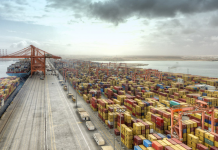With the world actively battling the COVID-19 pandemic, the International Monetary Fund (IMF) has revised the ‘World Economic Outlook (WEO)’ to a hopeful one.
This comes on the heels of strong and cautious COVID-19 protocols that have been set in place worldwide, and vaccination campaigns that continue to arm people in the fight against the pandemic.
Salient features of the March 2021 update include formulating a baseline on the basis of the observed effects of lockdowns, vaccine rollouts, and general changes in policies required to maintain the momentum of economic growth worldwide.
This translates to a 6 per cent projection in growth for the world economy – up from the 5.5 per cent that was forecasted earlier in January 2021. Average growth in the GDP for 2022 is expected to touch 4.4 per cent, which is higher than earlier estimates of 4.2 per cent.

Gita Gopinath, the Economic Counsellor and Director of Research, at the IMF said: “Even with high uncertainty about the path of the pandemic, a way out of this health and economic crisis is increasingly visible.
“Thanks to the ingenuity of the scientific community, we have multiple vaccines that can reduce the severity and frequency of infections. In parallel, adaptation to pandemic life has enabled the global economy to do well despite subdued overall mobility, leading to a stronger-than-anticipated rebound, on average, across regions,” she added.
“Additional fiscal support in some economies, (especially the United States) – on top of an already unprecedented fiscal response last year and continued monetary accommodation – further uplift the economic outlook.”
In her foreword, she added that the IMF is projecting a stronger recovery in 2021 and 2022 for the global economy compared to their previous forecast – with growth projected to be 6 percent in 2021 and 4.4 percent in 2022.
“Nonetheless,” she added, “The economic outlook presents daunting challenges related to divergences in the speed of recovery both across and within countries and the potential for persistent economic damage from the crisis.
“Multispeed recoveries are underway in all regions and across income groups, linked to stark differences in the pace of vaccine rollout, the extent of economic policy support, and structural factors such as reliance on tourism.”

“Among advanced economies, the United States is expected to surpass its pre-COVID GDP level this year, while many others in the group will return to their pre-COVID levels only in 2022. Similarly, among emerging market and developing economies, China had already returned to pre-COVID GDP in 2020, whereas many others are not expected to do so until well into 2023.”
These highly divergent recovery paths are likely caused in regions where there are wider gaps in living standards between developing countries and others, compared to pre-pandemic expectations.
The expert then added: “Cumulative per capita income losses over 2020–22, compared to pre-pandemic projections, are equivalent to 20 percent of 2019 per capita GDP in emerging markets and developing economies (excluding China), while in advanced economies the losses are expected to be relatively smaller, at 11 percent.
“This has reversed gains in poverty reduction, with an additional 95 million people expected to have entered the ranks of the extreme poor in 2020, and 80 million more undernourished than before.”
Impact of COVID-19 on Oman and other oil-based economies

Due to a recovery in oil prices being projected, the general downturn for oil-based economies is projected to ease with oil prices projected to recover by 20 per cent from 2020 levels; however, prices are expected to remain well below the markups from 2019.
Moreover, the opening up of borders and effective vaccination programmes in the GCC region, combined with effective lockdown protocols, will help the general recovery to 3 per cent growth in 2021 and 4.2 per cent in 2022.
Oman, on the other hand, could expect to see an annual change in its Real GDP by 1.8 per cent in 2021 and 7.4 per cent in 2022.
Story by Swathi Suresh with inputs from Alvin Thomas






